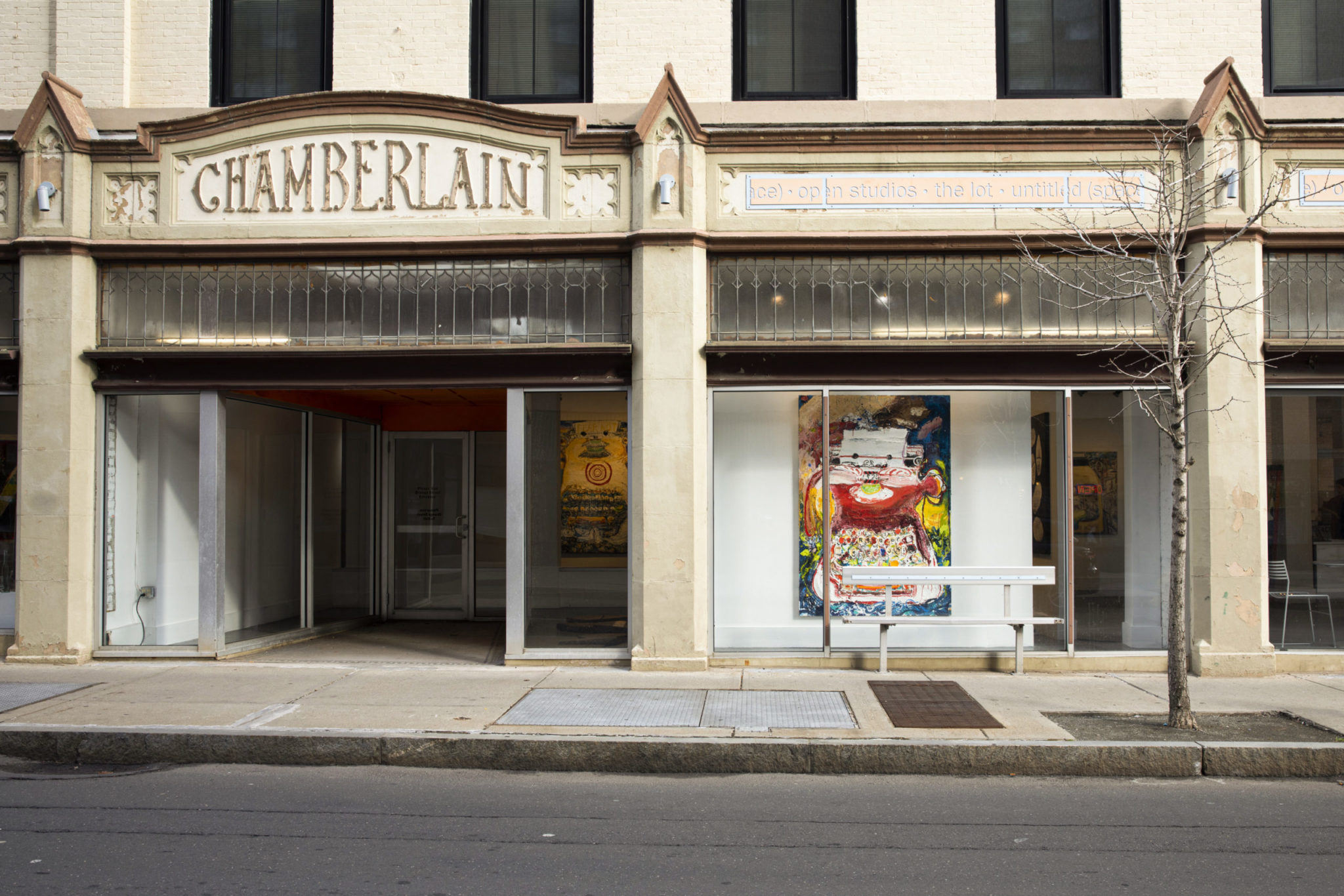
Courtesy Of Artspace New Haven
Artspace opened their exhibition “Strange Loops,” which looks at how humans have reproduced themselves in art as a means of self-actualization.
Starting Wednesday, the exhibit will remain open to the public until Feb. 29. The exhibition includes many art forms including sculpture, painting and digital media. All of the art explores the concept of the “strange loop,” first developed by Douglas Hofstadter in his book “Godel, Escher, Bach.” A strange loop is a cyclic structure that goes through several levels in a hierarchical system.
The exhibition also explores the “malady of the infinite,” an idea put forth by French sociologist Emile Durkheim, which states that limitless human desire can never be fulfilled. Though the malady was theorized by Durkheim over 100 years ago, curators Johannes DeYoung and Federico Solmi think that the digital media age has imparted new meaning upon the concept.
In his piece “It Takes a Global Village Idiot,” Jon Kessler arranges a series of identical, trustafarian-looking dolls into a huge mobile. The dolls are identical, dressed in blue tracksuits and pointing their index fingers. The dolls are barefoot, and they wear their pants low to cheekily expose the elastic of their Calvin Klein underwear. They hang precariously from arching metal poles, their heads and feet directed every which way. Sarah Fritchey, curator at Artspace, said “it sort of becomes commentary on someone who is allowed to fall.”
In her piece “Reparation Hardware,” Ilana Harris-Babou also entertains the loop’s hierarchies. The piece is composed of two parts: a video of Harris-Babou discussing the art and clay renditions of building tools. The video shows a vacant-faced Harris-Babou discussing how pieces from old farmhouses are repurposed in modern homes. Clay hammers crack and break into pieces. Flimsy, unfired clay tools are pushed clumsily onto nails, illustrating the comic incompetency of these construction efforts. Babou, dressed in pseudo-farmer attire, says from the TV, “with reparations, you can take the part into your home tastefully.”
Several artists explore the strange loop how Hofstadter imagined it: through the person. The art collective Blinn and Lambert take up an entire room with their exhibit “Romantic Love.” A 35 mm slide projector cycles through pictures of a flannel shirt folding and unfolding. Fritchey said she feels the exhibit is about color, beauty, sight and time. She added that the art echoes antiquated ideas about photography as a means of “capturing the soul.”
In her work “Punctum,” Ana Maria Gómez López makes a person into a loop by inserting needles and tubes into her arms, channeling blood in and out of her body. Fritchey noted that López worked with doctors to accomplish this feat. Two of her photographs are on display in “Strange Loops.”
“It’s her body outside of herself,” Fritchey said.
The exhibit was born out of a series of conversations between DeYoung and Solmi. The two met in 2013 and would visit each other often. Their conversations revolved around artists who worked in moving images or media.
“This exhibition represents our ongoing dialogue about shifting cultural paradigms brought about by rapid technological change,” DeYoung said. The exhibition was originally meant to discuss the ways in which digital mass media has propagated the phenomenon of the strange loop. Though this remains one of the exhibitions’s themes, DeYoung and Solmi expanded the subject matter over time.
“This exhibition represents an opportunity to slow down and think critically about the effect of rapid technological transformation on the body, the mind and the environment,” Solmi added. “The exhibition does not present a singular, monolithic perspective, but rather a plurality of perspectives drawn together through poetic association.”
In addition to “Modern Love,” there are two exhibits that use digital means to indicate how technology has impacted art and human interaction. One involves donning an Oculus Rift headset, standing in front of a table of wires and exploring a virtual reality of Artspace.
Teddy Mathias’ work “Modern Fossils of the City” and “Haptiscapes” is similarly interactive and involves using what he calls a divining rod — an iPhone connected to the end of a wooden stick with wires. Viewers use the divining rod to play instruments constructed with found materials. The headset plays sounds corresponding to the bumps, ridges and contours of the objects.
Fritchney says she wants those exploring the exhibition to reflect on how people replicate ourselves in everyday contexts. “Is there freedom and agency in that, or do we feel encumbered by it?” Fritchey asked.
DeYoung and Solmi took over two years to shepherd this exhibition into existence.
Annie Radillo | annie.radillo@yale.edu
Correction, Feb. 9: A previous version of this article said that the show ran through Feb. 19 when in fact it runs through Feb. 29. It also referred to the exhibit “Modern Love” as “Strange Love.” Additionally, the article has been updated to better describe Escher’s drawing in the fourth paragraph.







